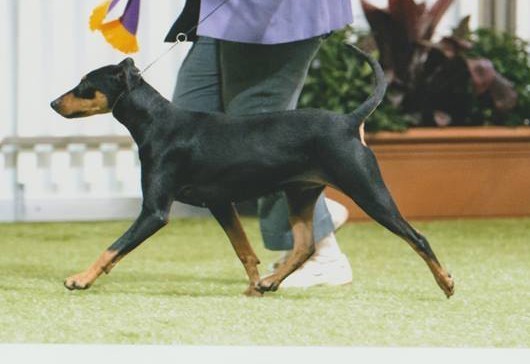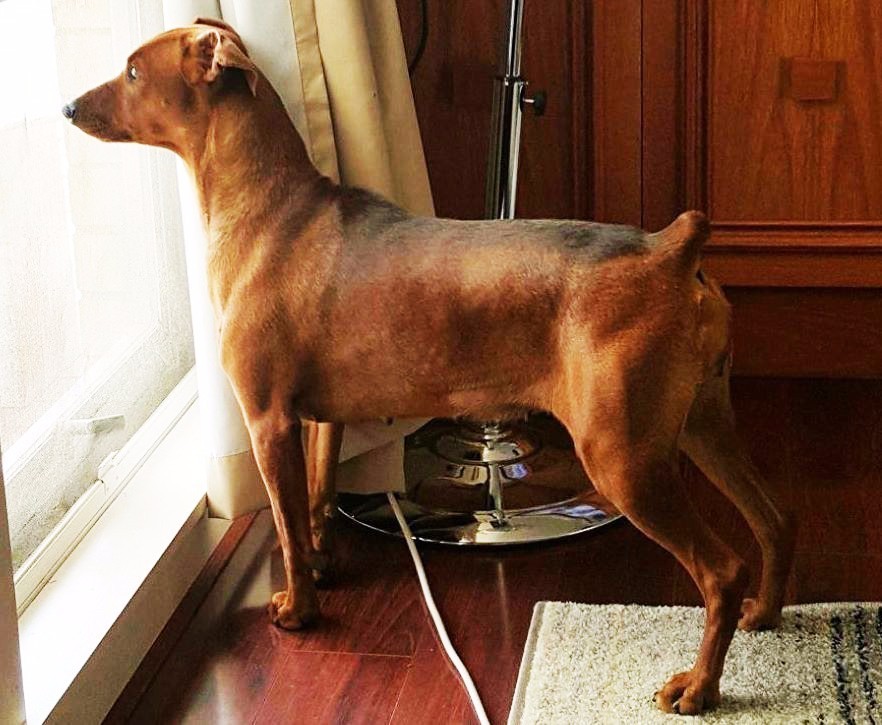
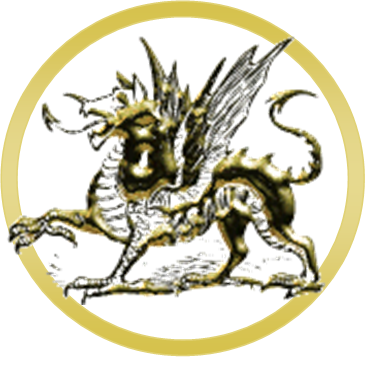

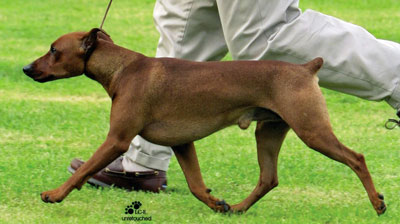


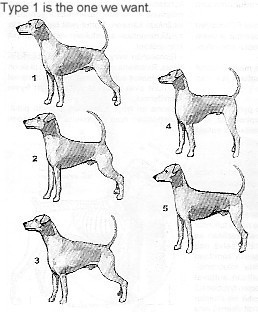
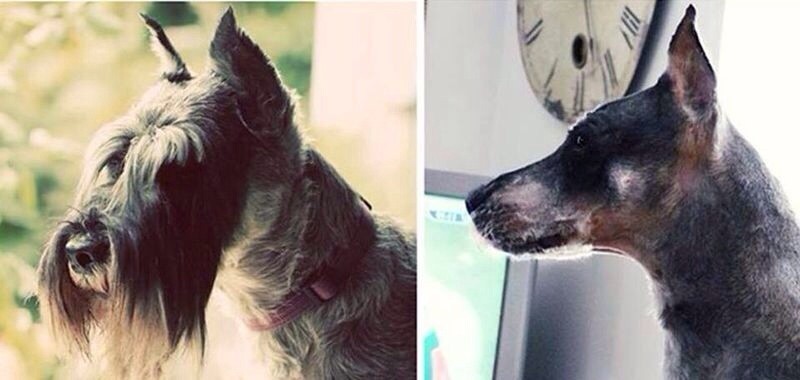
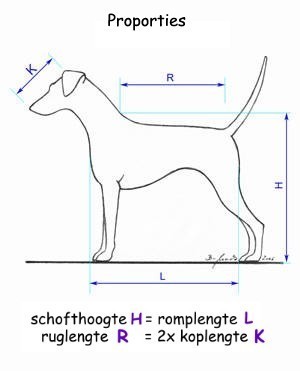
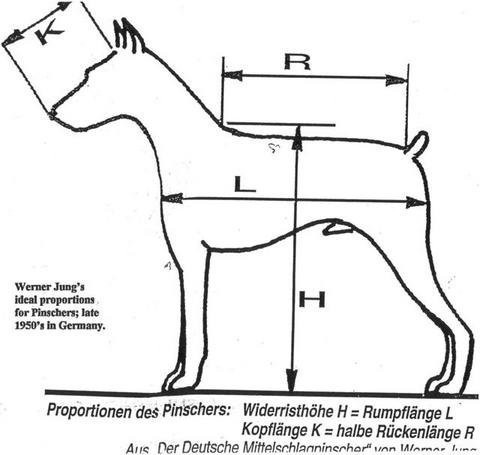
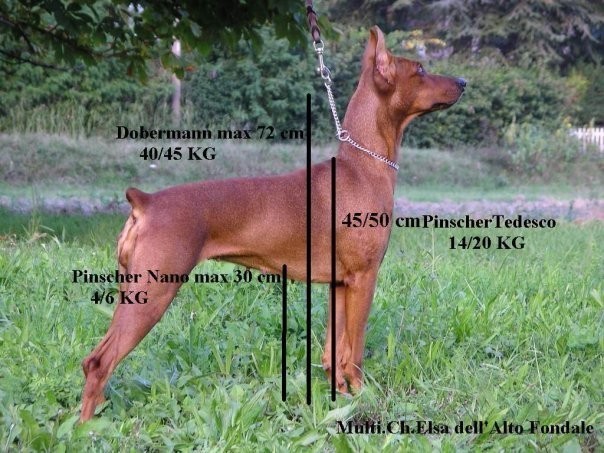
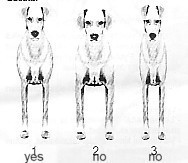
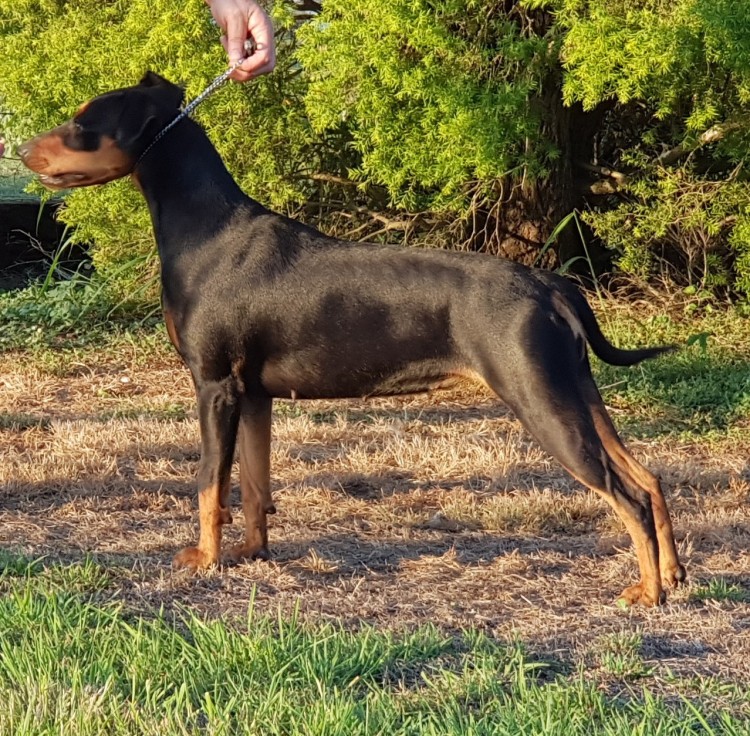
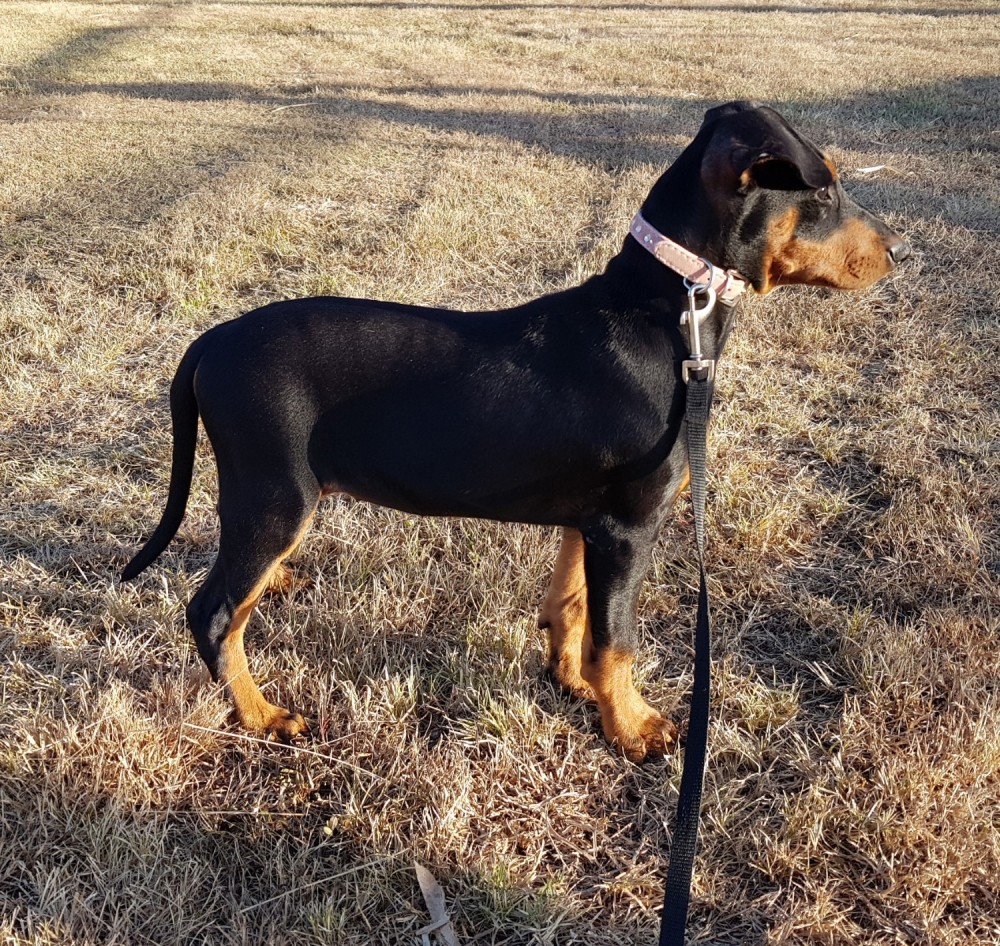
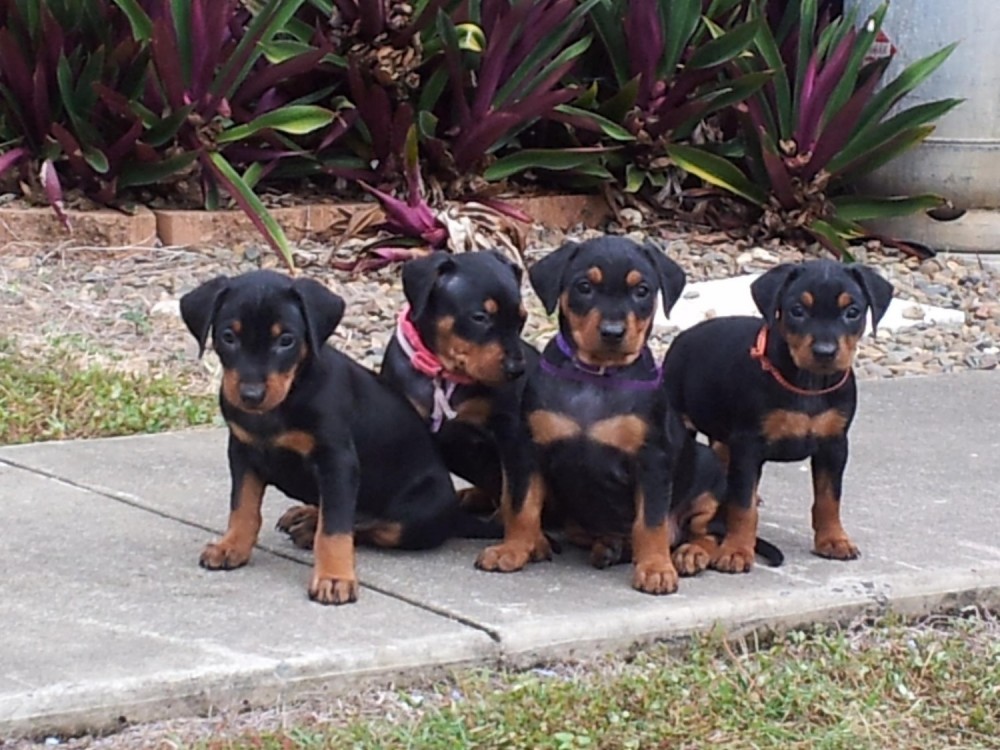
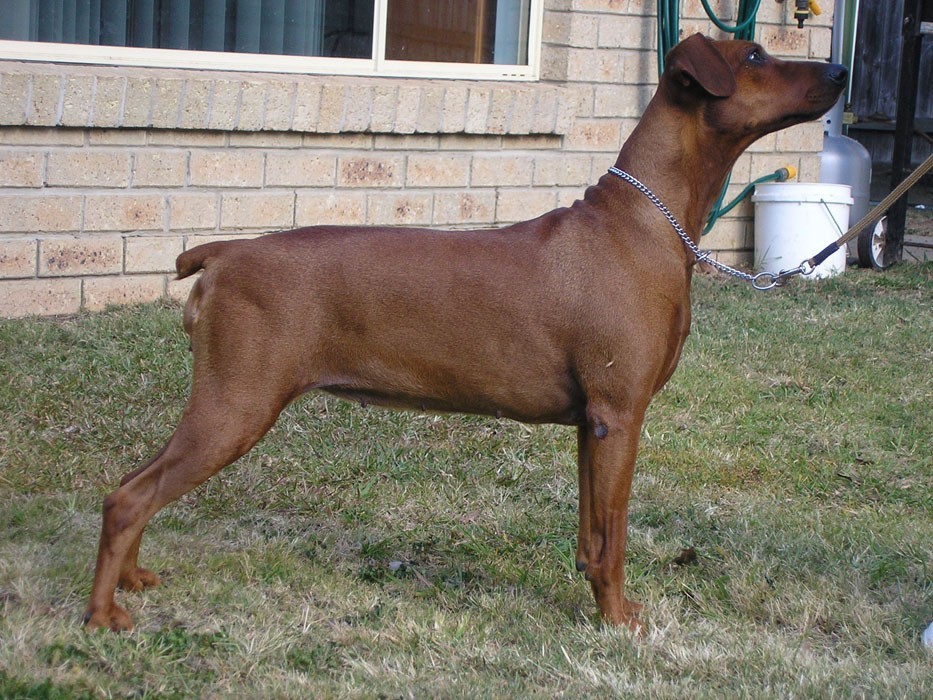
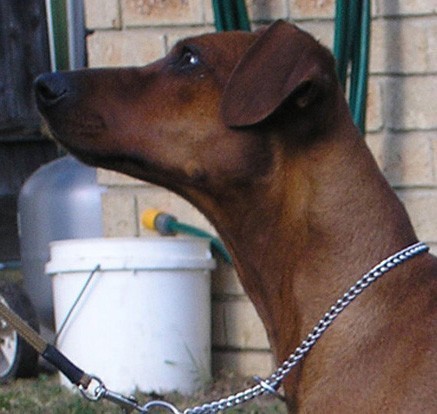
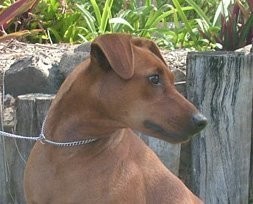
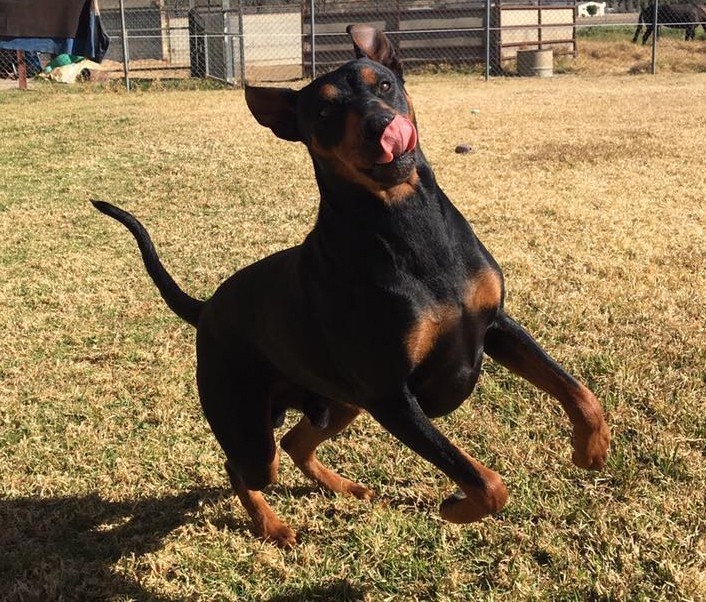

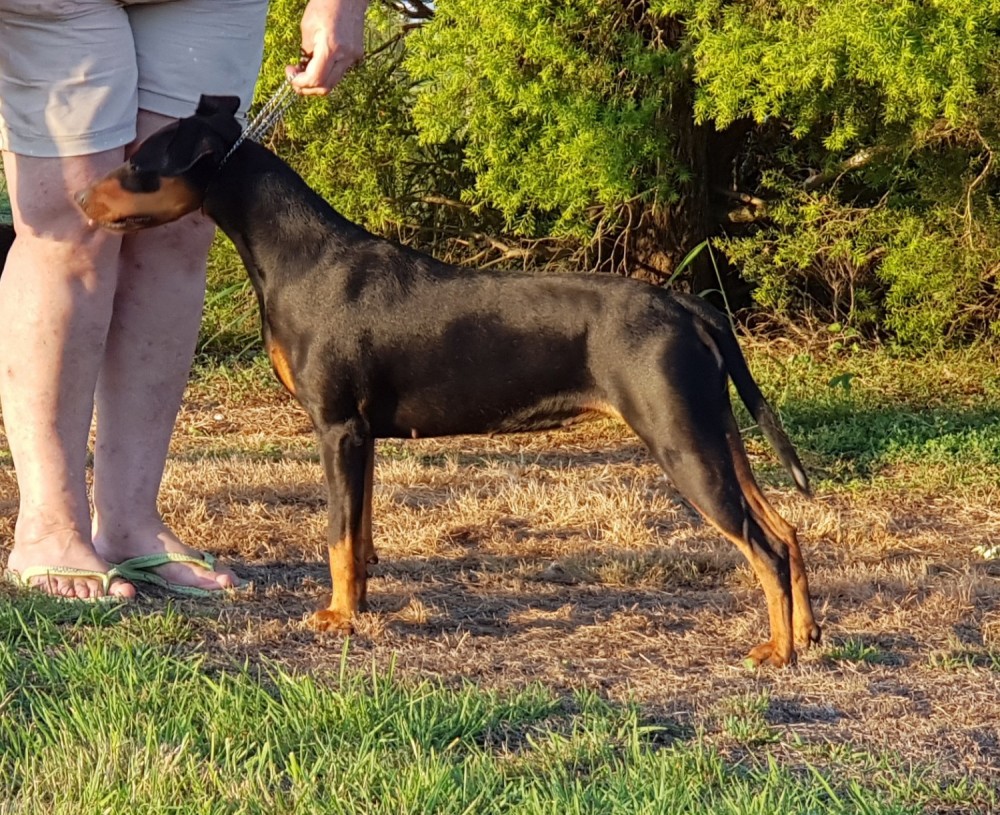
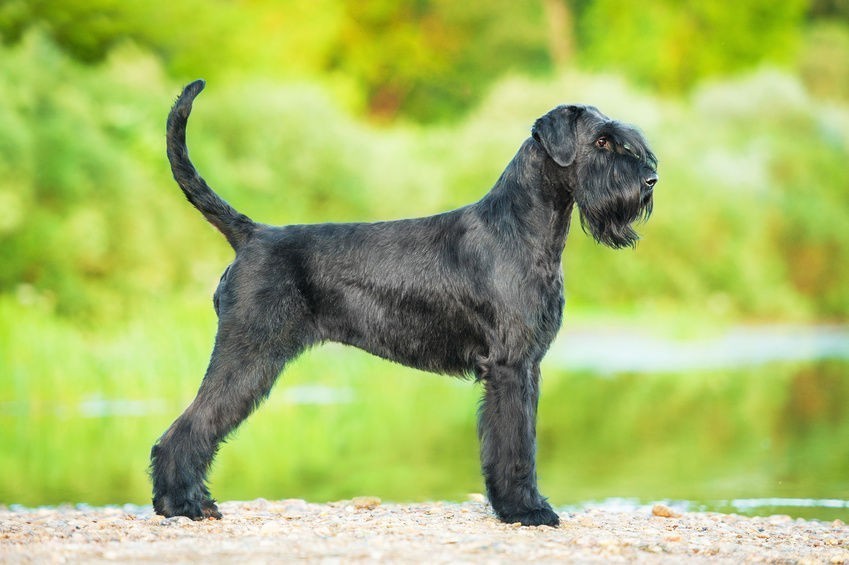
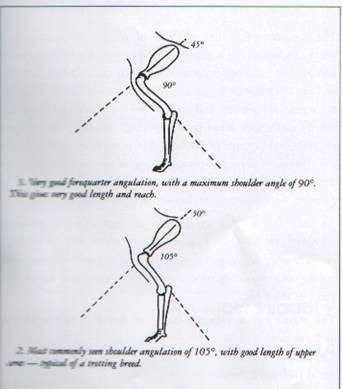
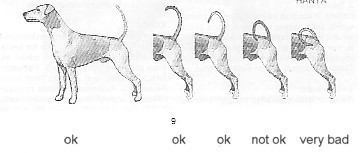

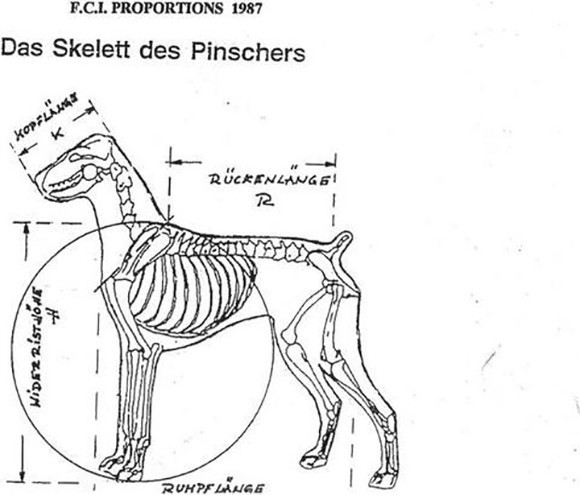
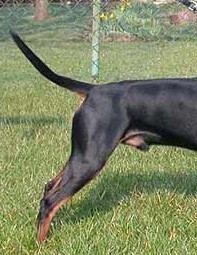
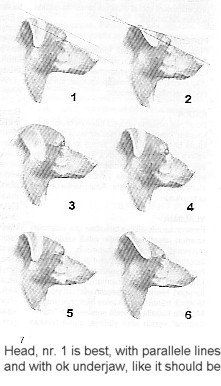
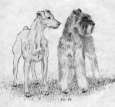
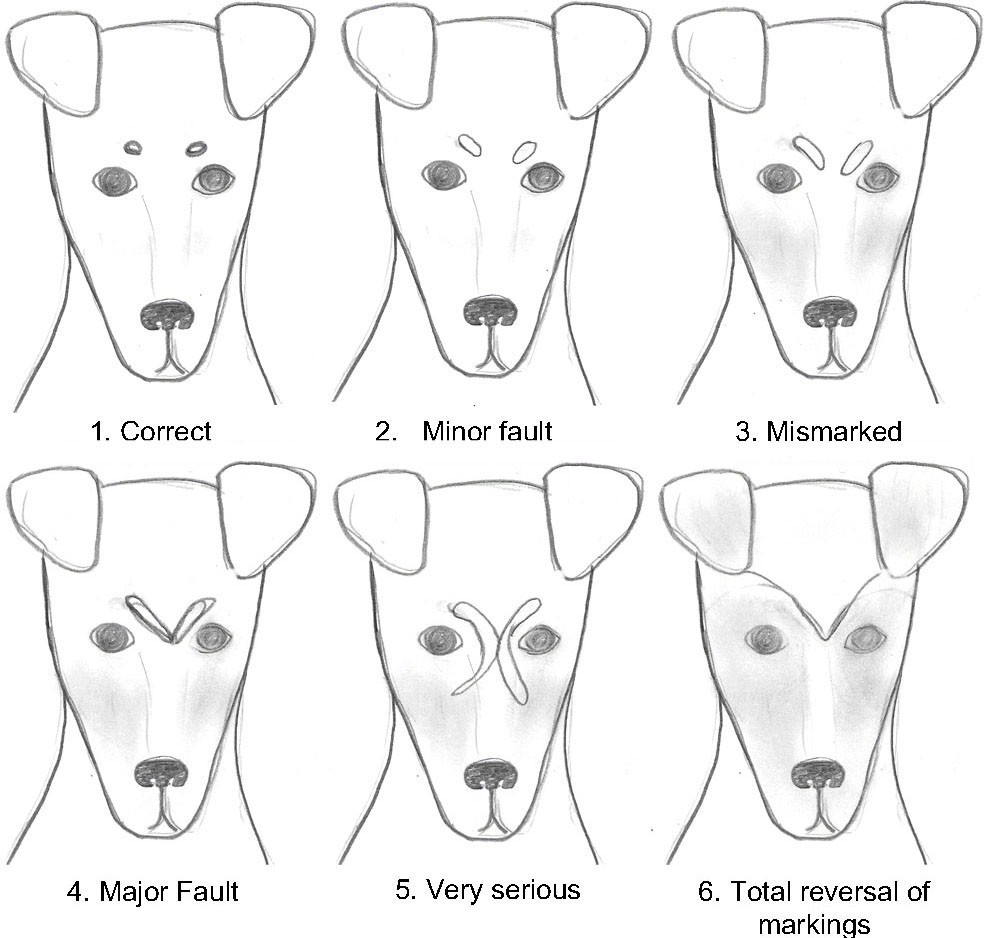



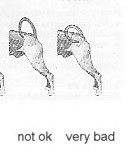
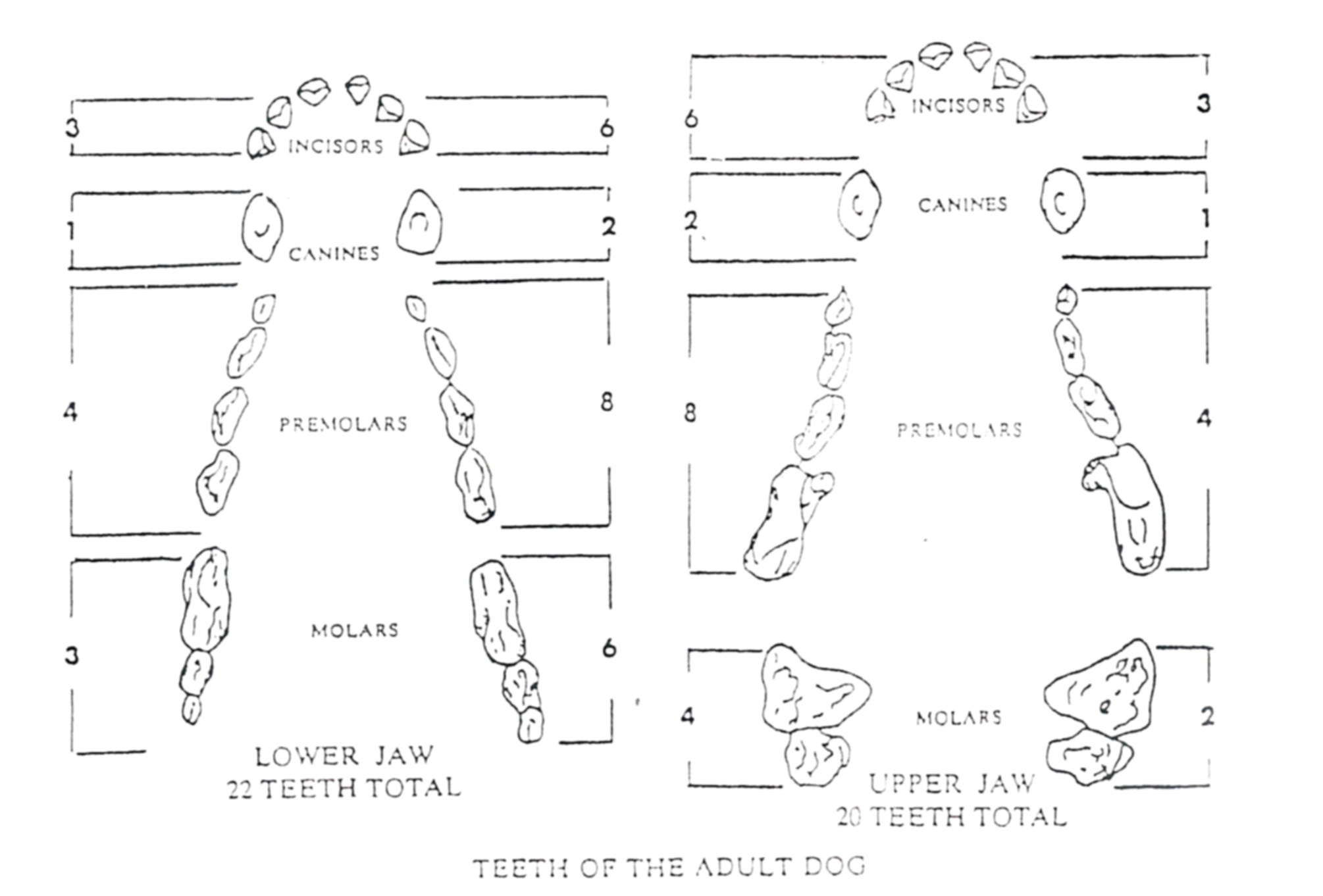

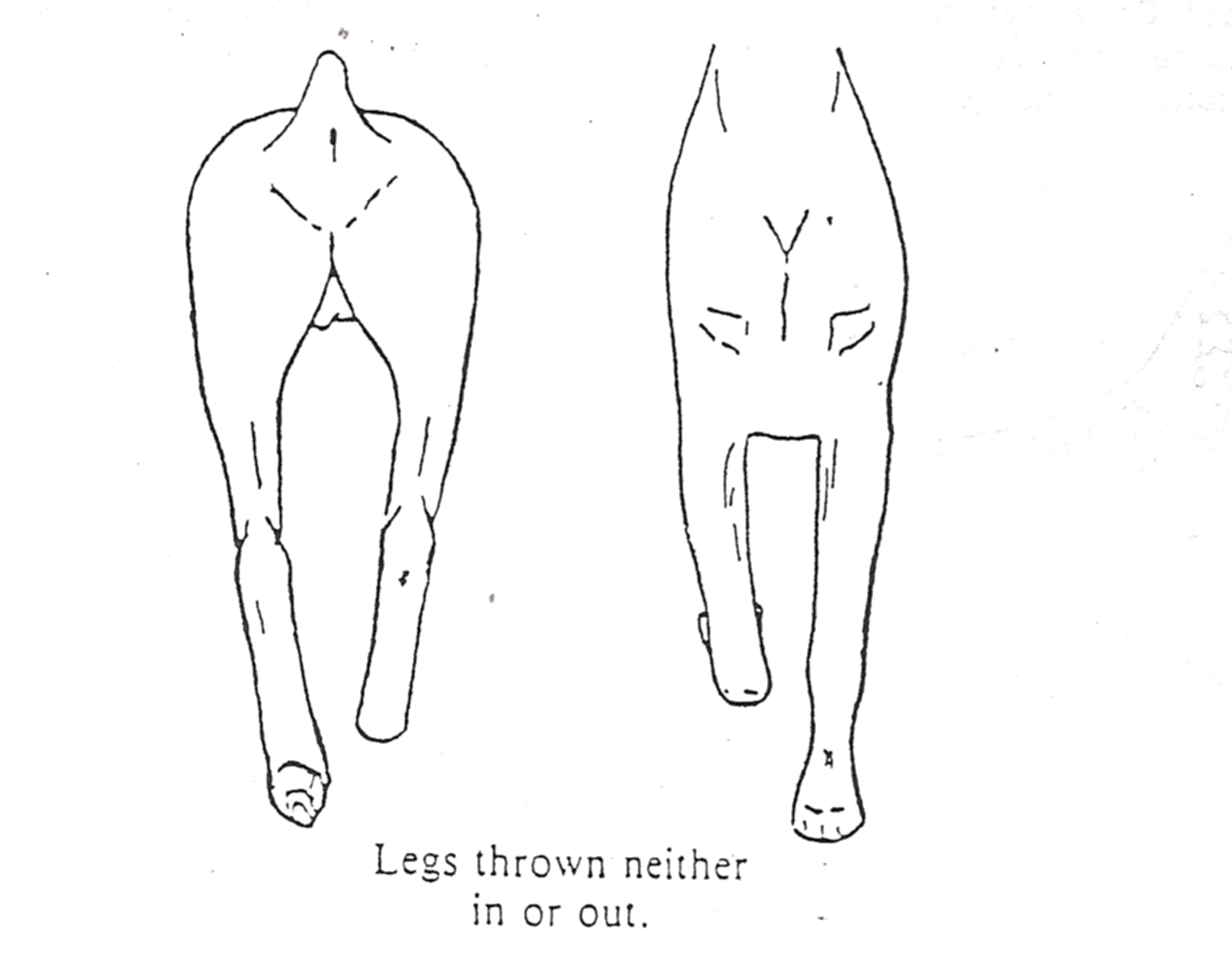
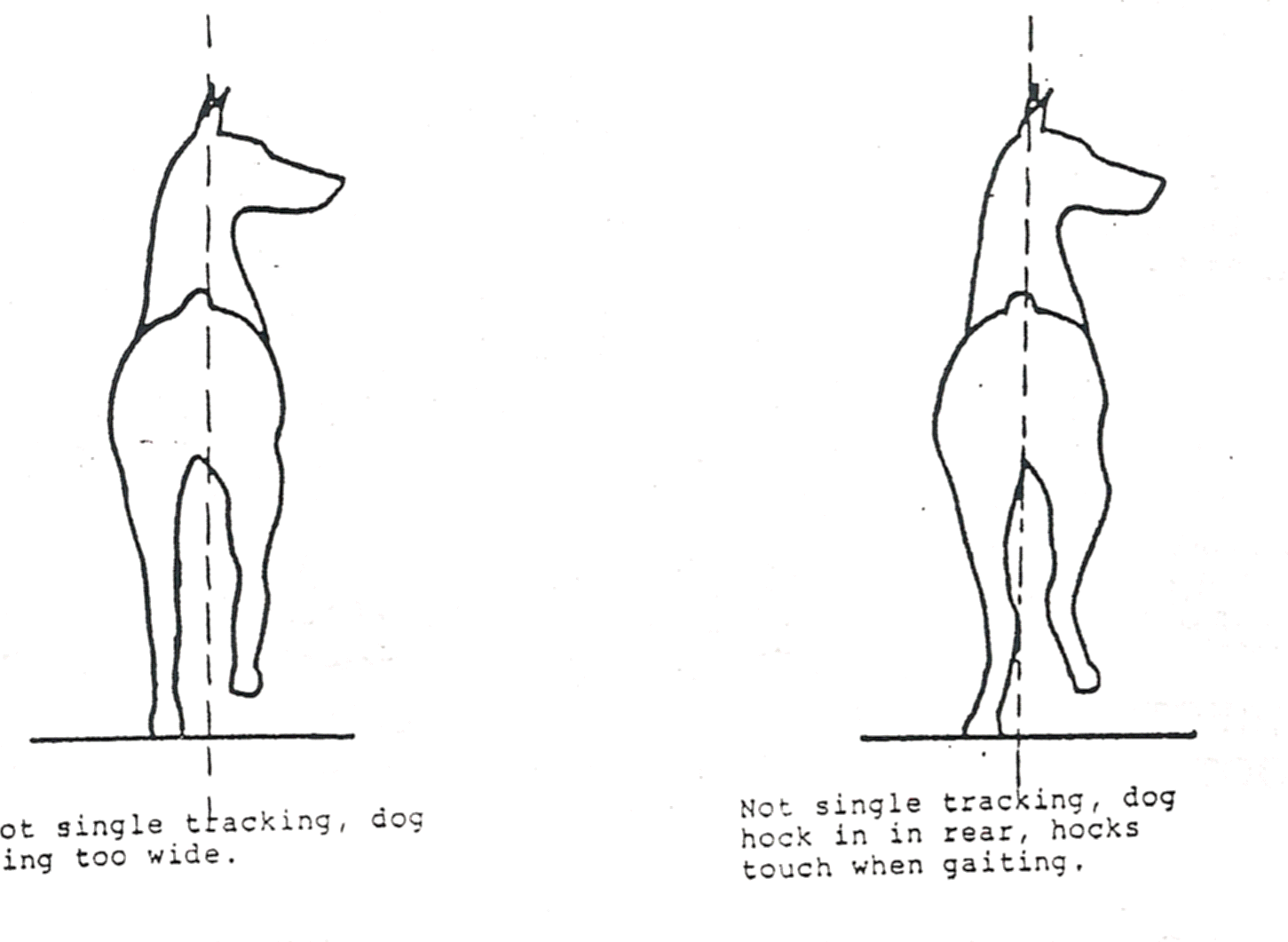




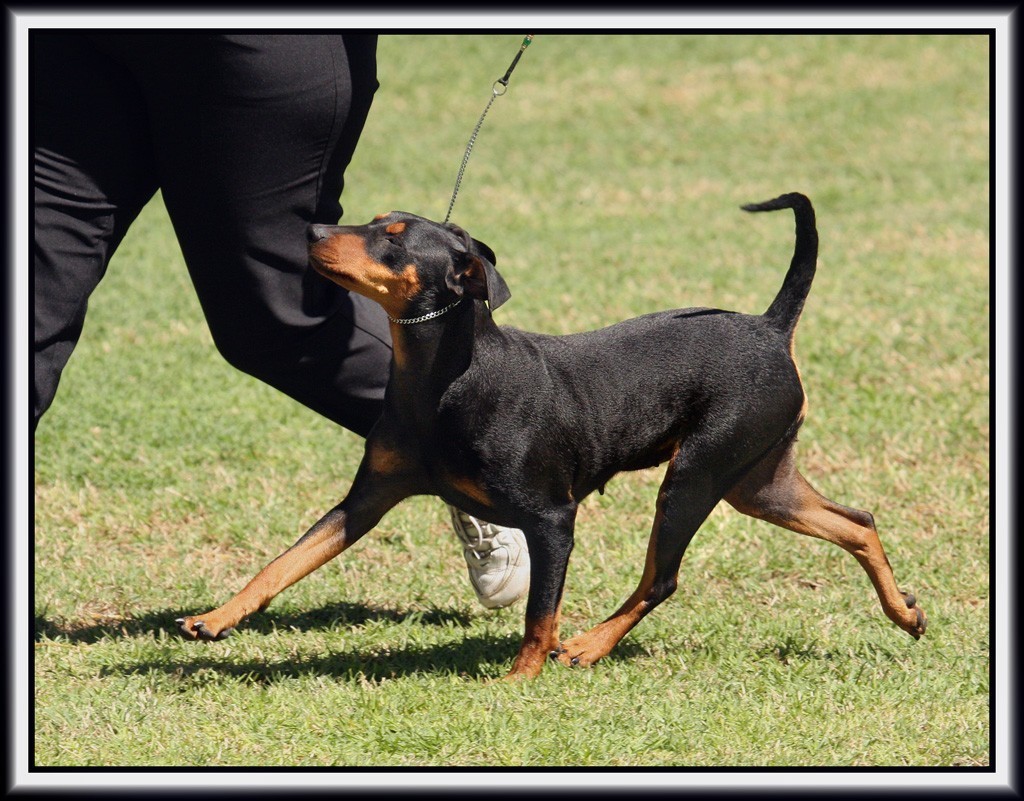
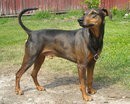
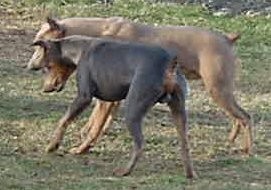
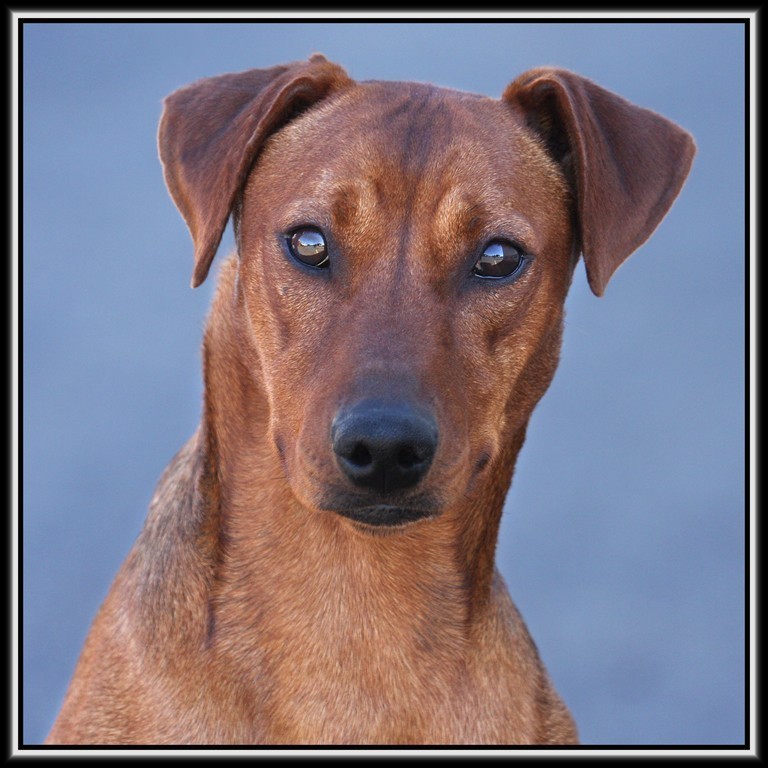
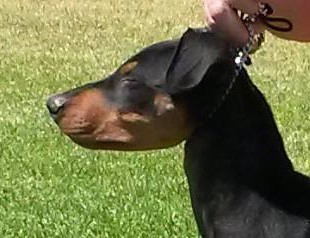
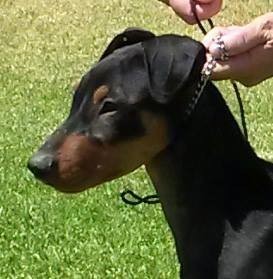
Comments - Head
Head type is similar to the shaved Schnauzer. The head is an elongated BLUNT WEDGE shape, but not too long as in the Dobermann who has a long elongated head (modern). A slightly shorter muzzle is common in this breed. Full deep muzzle and strong under jaw is required to perform this breeds applied work. It is expected that the fill under the eye lacking contributes to the snipey muzzle as often seen and a bit of too much checkiness is common. It is commonly believed the muzzle should be well filled under the eye. Snipiness is commonly seen in the GP. NEVER should it be the same as the Dobermann head.
Head type is similar to the shaved Schnauzer. The head is an elongated BLUNT WEDGE shape, but not too long as in the Dobermann who has a long elongated head (modern). A slightly shorter muzzle is common in this breed. Full deep muzzle and strong under jaw is required to perform this breeds applied work. It is expected that the fill under the eye lacking contributes to the snipey muzzle as often seen and a bit of too much checkiness is common. It is commonly believed the muzzle should be well filled under the eye. Snipiness is commonly seen in the GP. NEVER should it be the same as the Dobermann head.
Comments - history
Although the German Pinscher is often compared to the standard Schnauzer it is closest to the Giant Schnauzer by breed standard. The GP and the Schnauzer were originally born in the same litters as the rough and smooth coated varieties of the breed.
Although the German Pinscher is often compared to the standard Schnauzer it is closest to the Giant Schnauzer by breed standard. The GP and the Schnauzer were originally born in the same litters as the rough and smooth coated varieties of the breed.


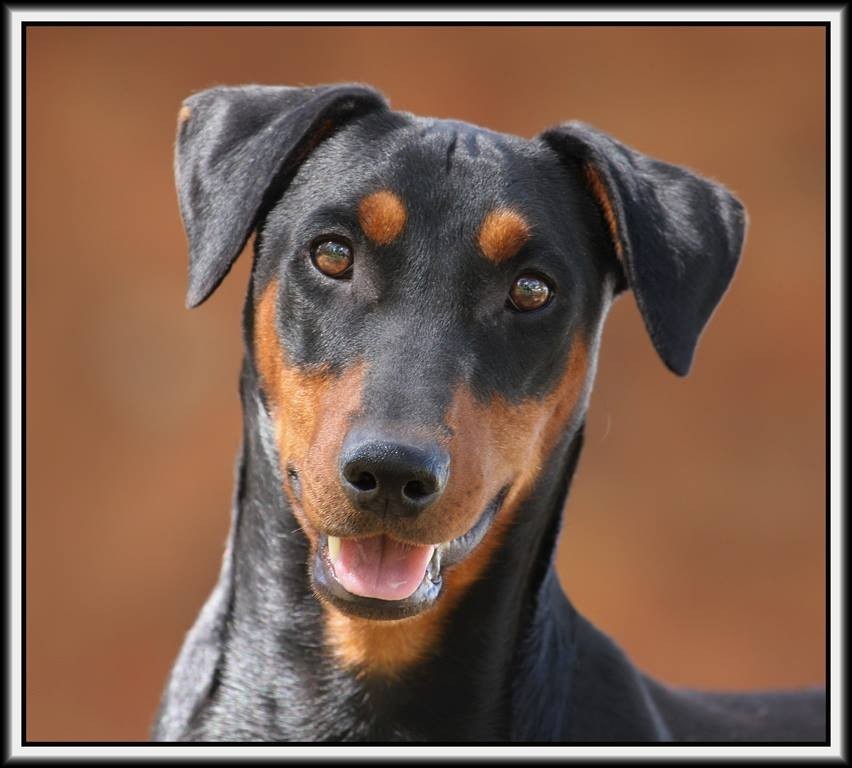
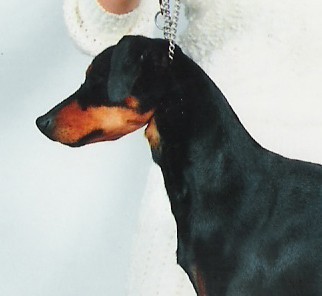


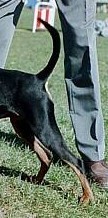
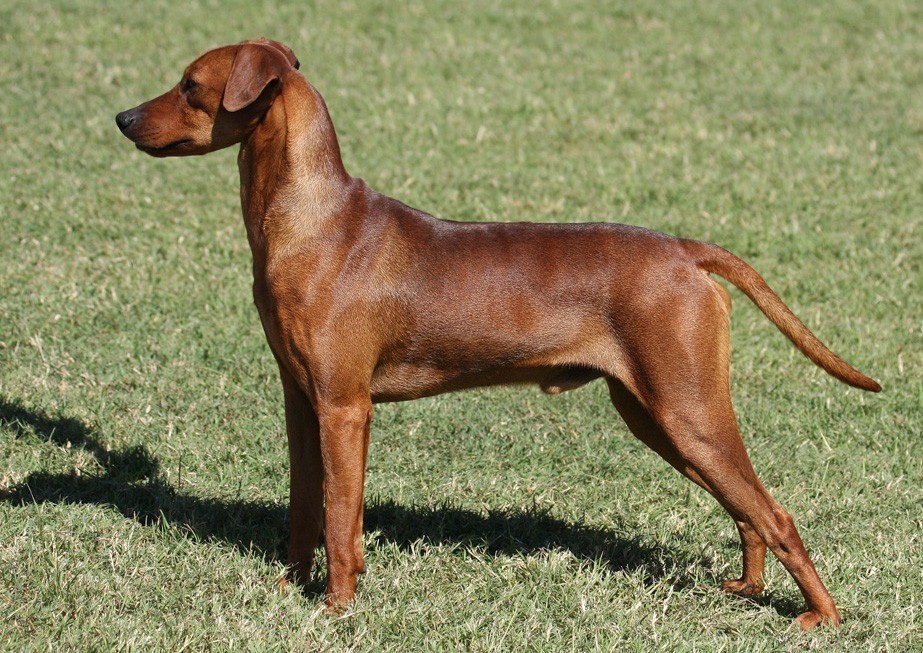
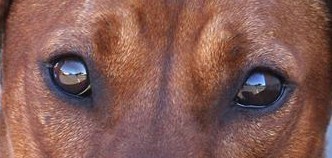
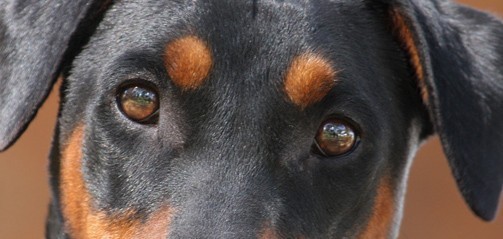












Comments
The German Pinscher and the standard Schnauzer were the same breed just the smooth and rough coated pups in the litter. It was the rough coats that became popular and the smooth coated dogs almost became extinct during WWII.
The German Pinscher and the standard Schnauzer were the same breed just the smooth and rough coated pups in the litter. It was the rough coats that became popular and the smooth coated dogs almost became extinct during WWII.
Comments - Eyes
The eye colour in the Stag Red, Blue and Fawns are accepted if a lighter colour than the dark eye expected inthe black in the standard and correspond to the pigments of the coat colours. The reds of all shades should have a dark pigment - never light or missing.
The eye colour in the Stag Red, Blue and Fawns are accepted if a lighter colour than the dark eye expected inthe black in the standard and correspond to the pigments of the coat colours. The reds of all shades should have a dark pigment - never light or missing.
Comments - Ear set
Ear sets should not be erect like the Miniature Pinscher, but this is an issue in some lines of GP's due to the introduction of the Min Pin when Werner Jung the original founder used oversized Min Pins to revitalise the German Pinscher breed in 1957, since it was almost extinct with only 2 females remaining in East Germany at that time. Very high set ears are common and acceptable providing they do not stand erect and lay correctly as in the bitch below.
Ear sets should not be erect like the Miniature Pinscher, but this is an issue in some lines of GP's due to the introduction of the Min Pin when Werner Jung the original founder used oversized Min Pins to revitalise the German Pinscher breed in 1957, since it was almost extinct with only 2 females remaining in East Germany at that time. Very high set ears are common and acceptable providing they do not stand erect and lay correctly as in the bitch below.
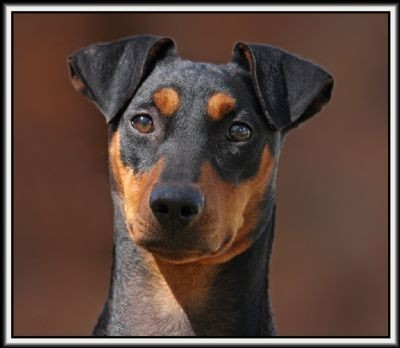
The German Pinscher Breed Standard
(The UK kennel club is the breed standard in use for Australia)
Last updated September 2007
A Breed Standard is the guideline which describes the ideal characteristics, temperament and appearance including the correct colour of a breed and ensures that the breed is fit for function. Absolute soundness is essential. Breeders and judges should at all times be careful to avoid obvious conditions or exaggerations which would be detrimental in any way to the health, welfare or soundness of this breed. From time to time certain conditions or exaggerations may be considered to have the potential to affect dogs in some breeds adversely, and judges and breeders are requested to refer to the Breed Watch section of the Kennel Club website here http://www.thekennelclub.org.uk/services/public/breed/watch for details of any such current issues. If a feature or quality is desirable it should only be present in the right measure. However if a dog possesses a feature, characteristic or colour described as undesirable or highly undesirable it is strongly recommended that it should not be rewarded in the show ring.
Comments - Feet
Front feet are cat like feet. Small and tight with the rear slightly longer but not hare footed.
Front feet are cat like feet. Small and tight with the rear slightly longer but not hare footed.
Comments - Thighs
Thighs should be strong with elongated muscle like an athlete with good width of both upper and lower thigh with moderate turn of stifle. The lower thigh is slightly longer than the upper thigh but not so long as to have the hocks too far back behind the hunches When stacked with hocks straight to the ground.
Thighs should be strong with elongated muscle like an athlete with good width of both upper and lower thigh with moderate turn of stifle. The lower thigh is slightly longer than the upper thigh but not so long as to have the hocks too far back behind the hunches When stacked with hocks straight to the ground.
Comments - Spring of Rib
Spring of rib is often confused in this breed. It is NOT well sprung but a flat spring of rib. NEVER slab sided ribs often seen in other breeds. The rib has good spring going into the flat rib as its comes over the side of the dog and down into the brisket area. A slab sided dog would have to have a very narrow width of body to accommodate a slab sided rib spring.
Spring of rib is often confused in this breed. It is NOT well sprung but a flat spring of rib. NEVER slab sided ribs often seen in other breeds. The rib has good spring going into the flat rib as its comes over the side of the dog and down into the brisket area. A slab sided dog would have to have a very narrow width of body to accommodate a slab sided rib spring.
Comments - Tails
The tail is a sabre tail - meaning a nice curve from correct set on of tail without an obvious curl nor a spitz type tail curling over the back or touching the back.
The tail is high set but never a gay tail or hooked in the docked dog or the natural tailed dog.
The docked dogs will often appear to be a squarer/shorter dog until you are used to seeing the tail extended from the rear of the dog.
The GP tail is vulnerable to breakages and damage through wagging and hitting it on anything it is close too. Once of the reasons the breed was docked originally.
The tail is a sabre tail - meaning a nice curve from correct set on of tail without an obvious curl nor a spitz type tail curling over the back or touching the back.
The tail is high set but never a gay tail or hooked in the docked dog or the natural tailed dog.
The docked dogs will often appear to be a squarer/shorter dog until you are used to seeing the tail extended from the rear of the dog.
The GP tail is vulnerable to breakages and damage through wagging and hitting it on anything it is close too. Once of the reasons the breed was docked originally.
Comments - Gaits and head position
The German Pinscher gaits with its head in the level position if built correctly while on the move.
Hackney movement is a highly serious fault and a dog exhibiting this movement is incorrect. It is a disqualifying fault in the FCI breed standard.
The rotary action is only in the UK breed standard and is a strong driving movement out the back of the dog with a higher lift when rotating its hock back under the body hitting the ground with strong power for the rear drive in a dog while on the chase after rabbits etc. and is a ground covering movement when at speed. The German Pinscher is a trotter while on the hunt. This enables a dog to go over long distances while hunting.
The German Pinscher gaits with its head in the level position if built correctly while on the move.
Hackney movement is a highly serious fault and a dog exhibiting this movement is incorrect. It is a disqualifying fault in the FCI breed standard.
The rotary action is only in the UK breed standard and is a strong driving movement out the back of the dog with a higher lift when rotating its hock back under the body hitting the ground with strong power for the rear drive in a dog while on the chase after rabbits etc. and is a ground covering movement when at speed. The German Pinscher is a trotter while on the hunt. This enables a dog to go over long distances while hunting.
Comments - Colours
The German Pinscher has a variety of colours that are not included in this breed standard. The wild boar, the Red nosed red and the Chocolate.
The original colours where the black/reddish tan, Blue and Tan, Isabella, the Red to Stag red, the chocolate and tan, solid Black and the Salt and Pepper.
The stag red has black hairs throughout its red hairs but should not be overdone as to create a saddle appearance over the back as in picture below.
White is not acceptable.
The German Pinscher has a variety of colours that are not included in this breed standard. The wild boar, the Red nosed red and the Chocolate.
The original colours where the black/reddish tan, Blue and Tan, Isabella, the Red to Stag red, the chocolate and tan, solid Black and the Salt and Pepper.
The stag red has black hairs throughout its red hairs but should not be overdone as to create a saddle appearance over the back as in picture below.
White is not acceptable.
This red is the ideal stag colour
This shows the Fawn (Isabella) and Blue German Pinschers
This an is an ideal reddish tan marked dog.
This red darker saddle over her back is not the ideal stag colour wanted. This is not preferred but not a disqualifying fault
This shows the size different in all the breeds that were created from the GP with exception to the Austrianco.
This red is the wild boar colour not accepted in the UK breed standard
This red is the wild boar colour not accepted in the UK breed standard
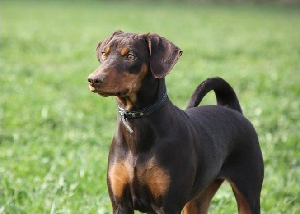
This dog is the chocolate colour and not accepted in the UK breed standard although good examples of the breed.
This dog is the wild boar colour not accepted in the UK breed standard, although a good example of the breed.
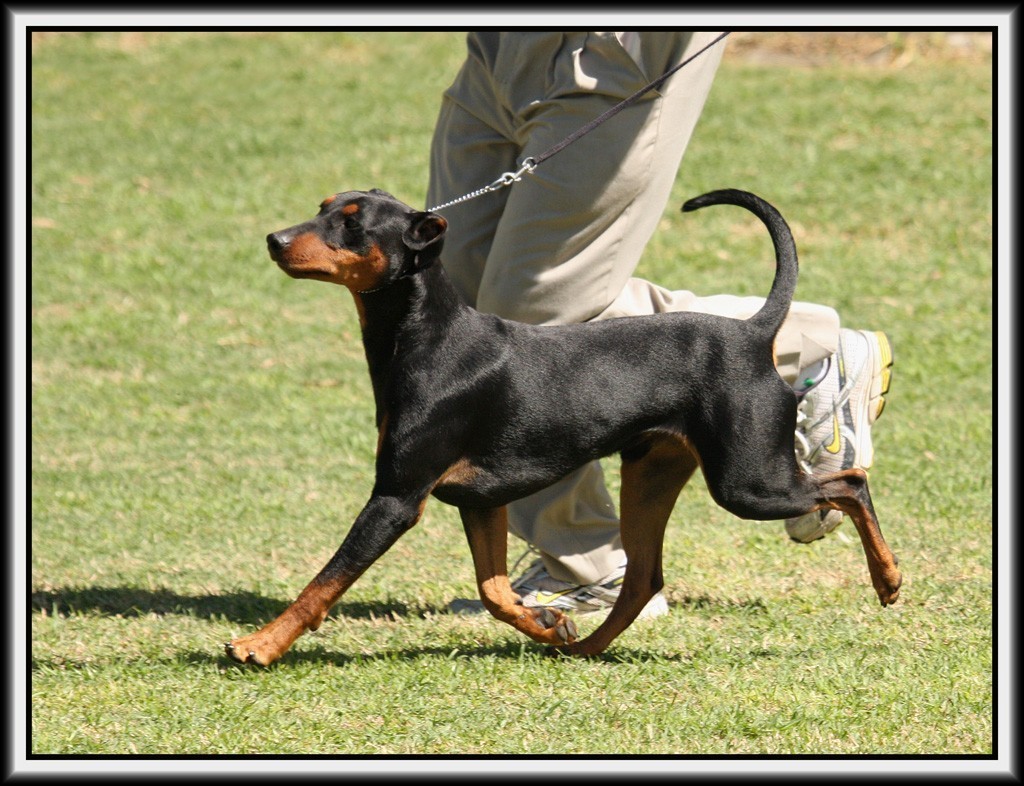
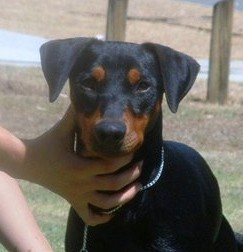
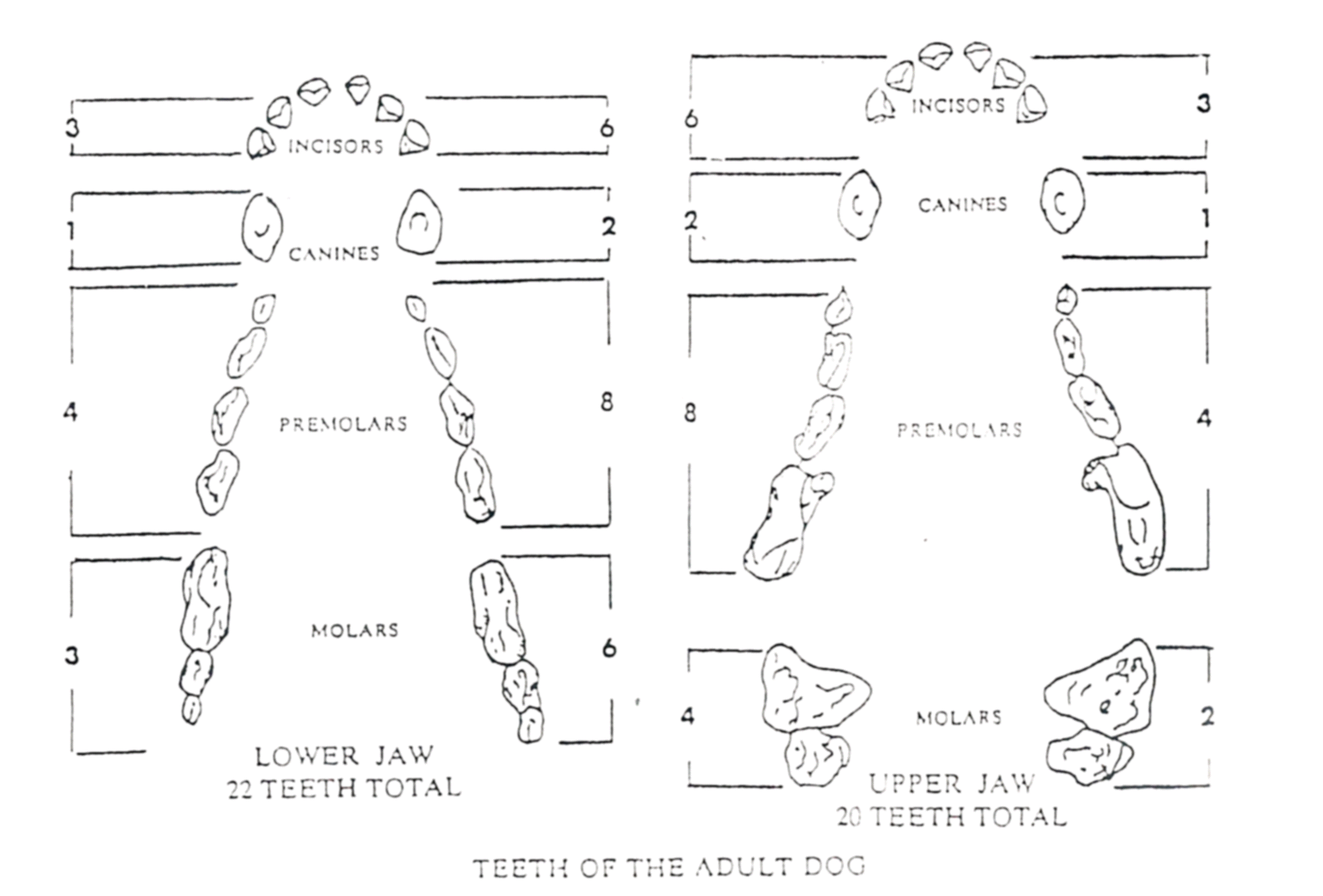

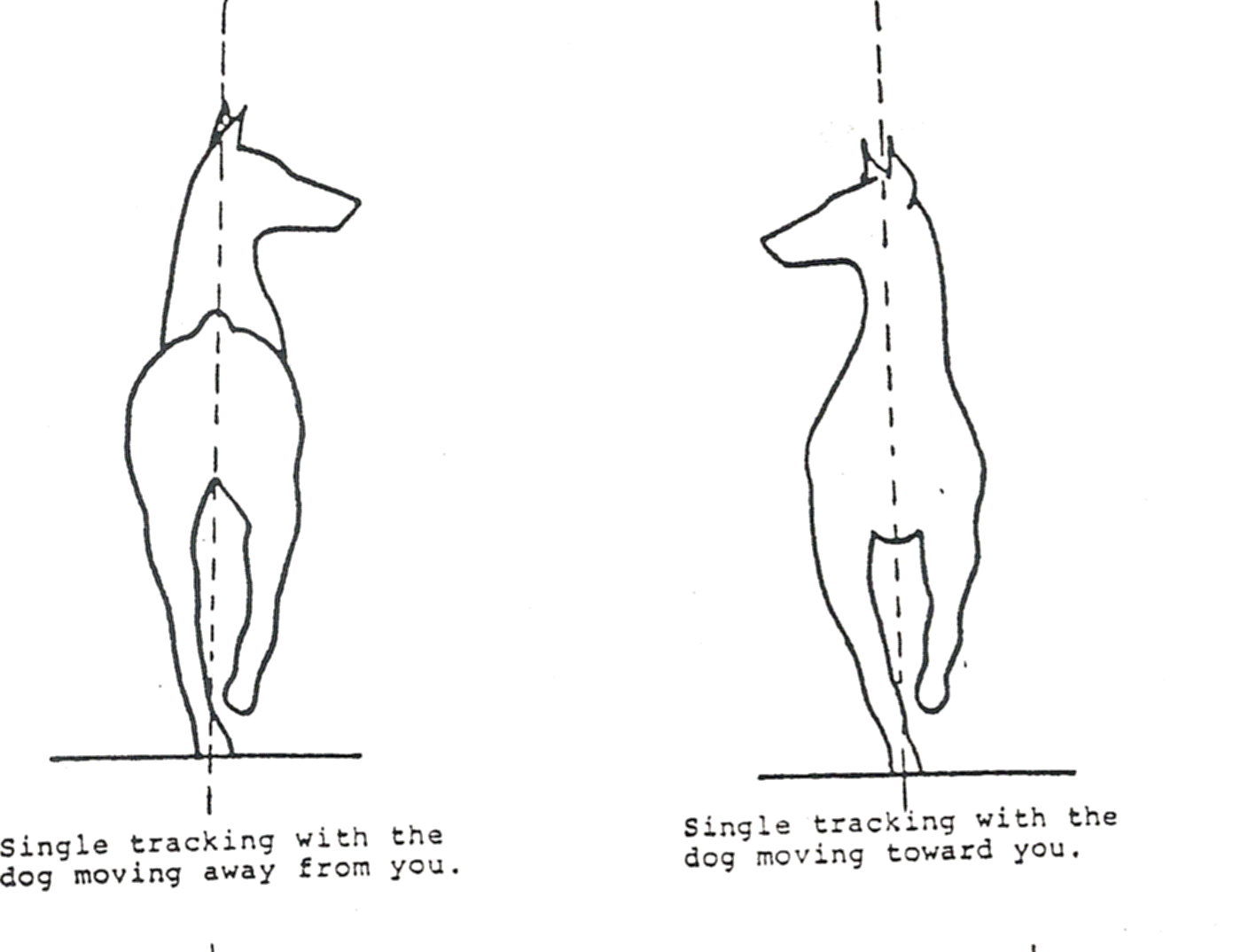










General Appearance
Well balanced, smooth coated, medium size with elegant and flowing outlines but strong and well muscled.
Well balanced, smooth coated, medium size with elegant and flowing outlines but strong and well muscled.
Characteristics
Alert, good-natured, playful. Loyal, watchful and fearless.
Alert, good-natured, playful. Loyal, watchful and fearless.
Head and Skull
Seen from above and side resembles a blunt wedge. Strong but not heavy, elongated without pronounced occiput. Overall length in proportion to back (from withers to base of tail) is approximately 1:2. Top of muzzle parallel with extended line of unwrinkled flat forehead; slight but distinct stop. Cheek muscles strong but not prominent. Deep muzzle. Nose full and black; in reds, nose of corresponding shade. Lips tight and dark. Snipiness undesirable.
Seen from above and side resembles a blunt wedge. Strong but not heavy, elongated without pronounced occiput. Overall length in proportion to back (from withers to base of tail) is approximately 1:2. Top of muzzle parallel with extended line of unwrinkled flat forehead; slight but distinct stop. Cheek muscles strong but not prominent. Deep muzzle. Nose full and black; in reds, nose of corresponding shade. Lips tight and dark. Snipiness undesirable.
Ears
Set high. V-shaped, folded down close to head.
Set high. V-shaped, folded down close to head.
Mouth
Jaws strong with a perfect, regular and complete scissor bite, i.e. upper teeth closely overlapping lower teeth and set square to the jaws.
Jaws strong with a perfect, regular and complete scissor bite, i.e. upper teeth closely overlapping lower teeth and set square to the jaws.
Neck
Elegant and strong. Neither short nor stout. Nape well arched. Skin of throat tight without dewlap.
Elegant and strong. Neither short nor stout. Nape well arched. Skin of throat tight without dewlap.
Forequarters
Well laid shoulder with good but flat muscle. Forelegs straight viewed from all sides, parallel elbows are close to body.
Well laid shoulder with good but flat muscle. Forelegs straight viewed from all sides, parallel elbows are close to body.
Body
Chest moderately wide with flat ribs. Brisket extends below elbow. Body Forechest extends beyond point of shoulder. Compact and short coupled. Length of body approximately equal to height at withers. Back short and slightly sloping. Slightly rounded croup.
Chest moderately wide with flat ribs. Brisket extends below elbow. Body Forechest extends beyond point of shoulder. Compact and short coupled. Length of body approximately equal to height at withers. Back short and slightly sloping. Slightly rounded croup.
Hindquarters
Seen from behind parallel, with sufficient width. Upper thigh slanted and strongly muscled. Good length and bend of stifle, hocks turning neither in nor out.
Seen from behind parallel, with sufficient width. Upper thigh slanted and strongly muscled. Good length and bend of stifle, hocks turning neither in nor out.
Feet
Well arched, compact and cat-like with dark nails. Turning neither in nor out. Tough, hard pads.
Well arched, compact and cat-like with dark nails. Turning neither in nor out. Tough, hard pads.
Tail
Previously customarily docked.
Docked: Docked to three joints. Set and carried high.
Undocked: Set and carried high with an upward sweep. In overall balance with the rest of the dog.
Previously customarily docked.
Docked: Docked to three joints. Set and carried high.
Undocked: Set and carried high with an upward sweep. In overall balance with the rest of the dog.
Gait/Movement
Free, well balanced and vigorous with good reach in front and strong rotary driving action from rear. Front and hind legs should not be thrown outwards. Topline should remain strong and firm. Hackney movement undesirable.
Free, well balanced and vigorous with good reach in front and strong rotary driving action from rear. Front and hind legs should not be thrown outwards. Topline should remain strong and firm. Hackney movement undesirable.
Coat
Short and dense, smoothly fitting, glossy without bald spots.
Short and dense, smoothly fitting, glossy without bald spots.
Colour
All solid colours from fawn (Isabella) to stag red in various shades. Black and blue with reddish/tan markings. In bi-coloured dogs sharply marked red/tan markings desirable. Markings distributed as follows: at cheeks, lips, lower jaw, above eyes, at throat, at forechest as two triangles separated from each other, at metatarsus, forelegs, feet, inner side of hindlegs and vent region.
All solid colours from fawn (Isabella) to stag red in various shades. Black and blue with reddish/tan markings. In bi-coloured dogs sharply marked red/tan markings desirable. Markings distributed as follows: at cheeks, lips, lower jaw, above eyes, at throat, at forechest as two triangles separated from each other, at metatarsus, forelegs, feet, inner side of hindlegs and vent region.
Faults
Size
Height at withers 43-48 cms (17-19 ins).
Height at withers 43-48 cms (17-19 ins).
Note
Male animals should have two apparently normal testicles fully descended into the scrotum.
*Note for prospective puppy buyers
Size – the Kennel Club Breed Standard is a guide and description of the ideal for the breed; the Size as described does not imply that a dog will match the measurements given (height or weight). A dog might be larger or smaller than the size measurements stated in the Breed Standard.
Male animals should have two apparently normal testicles fully descended into the scrotum.
*Note for prospective puppy buyers
Size – the Kennel Club Breed Standard is a guide and description of the ideal for the breed; the Size as described does not imply that a dog will match the measurements given (height or weight). A dog might be larger or smaller than the size measurements stated in the Breed Standard.
Any departure from the foregoing points should be considered a fault and the seriousness with which the fault should be regarded should be in exact proportion to its degree and its effect upon the health and welfare of the dog and on the dog’s ability to perform its traditional work.
Eyes
Dark, of medium size, oval and directed forward. Eye rims tight.
Dark, of medium size, oval and directed forward. Eye rims tight.
Temperament
High-spirited and self-possessed.
High-spirited and self-possessed.
Comments - Temperament
High-spirited and self-possessed.
This breed is a hunting and guarding breed., therefore it has a strong prey drive and alertness to strangers.
The breed is family friendly with a strong protective instinct. GP's are also possessive with anything they deem theirs including the home territory and family, toys , chairs and trolleys.
High-spirited and self-possessed.
This breed is a hunting and guarding breed., therefore it has a strong prey drive and alertness to strangers.
The breed is family friendly with a strong protective instinct. GP's are also possessive with anything they deem theirs including the home territory and family, toys , chairs and trolleys.

Comments - Mouth
The mouth of the GP was once accepted to have the Pinscher or Level bite. This appears occasionally and is now a fault in the breed. The true scissor bite is the only bite accepted.
The mouth of the GP was once accepted to have the Pinscher or Level bite. This appears occasionally and is now a fault in the breed. The true scissor bite is the only bite accepted.




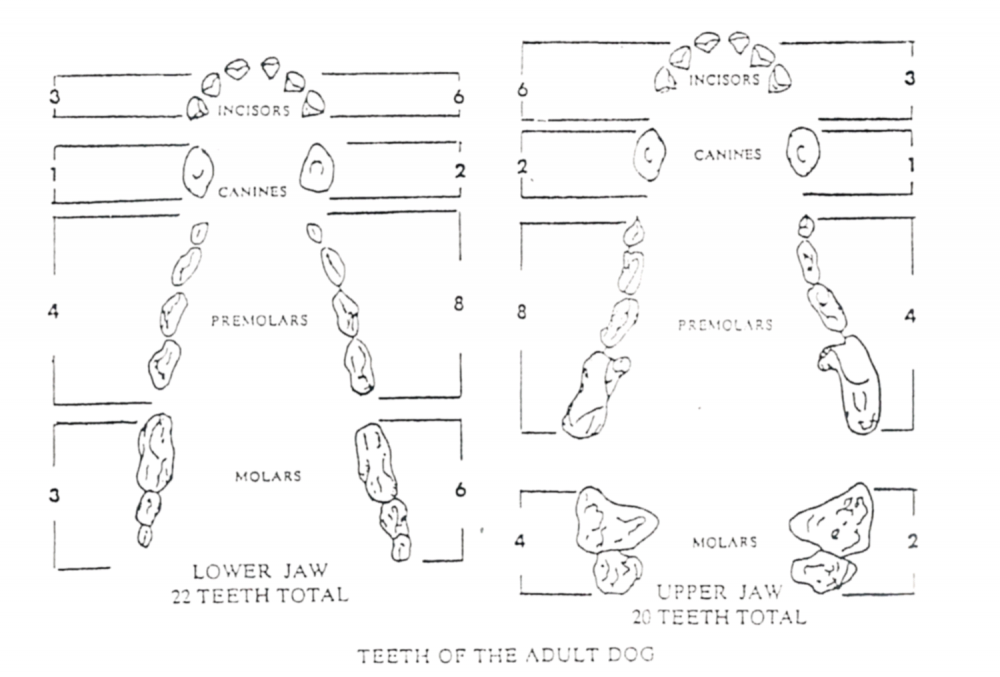
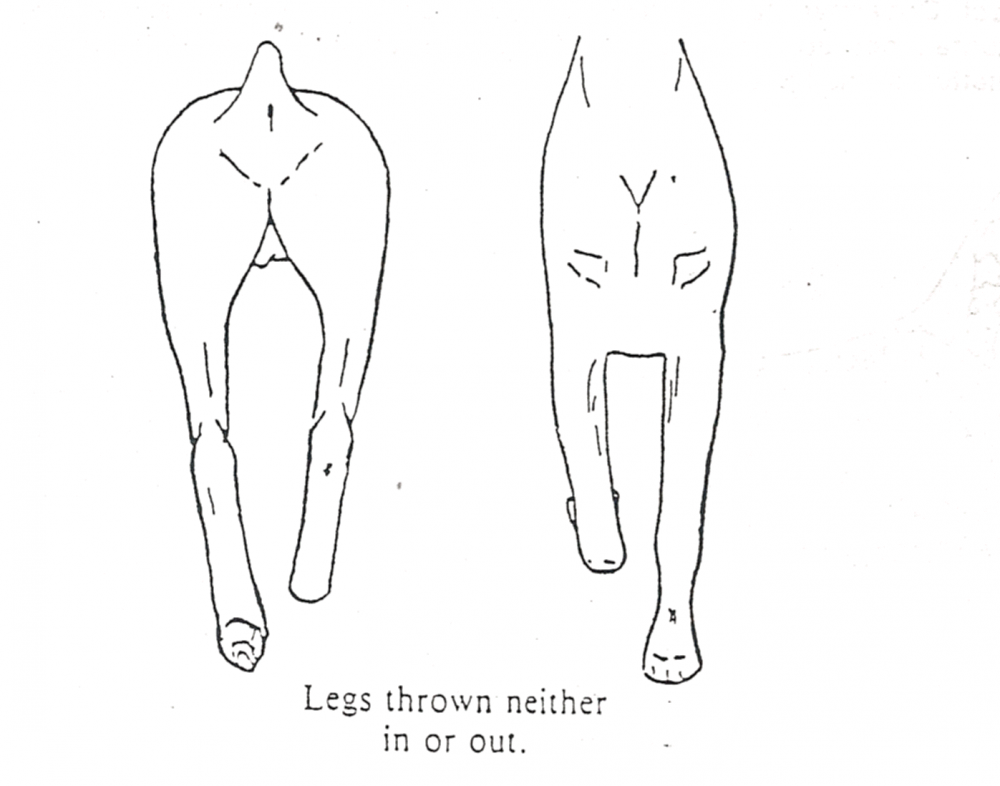
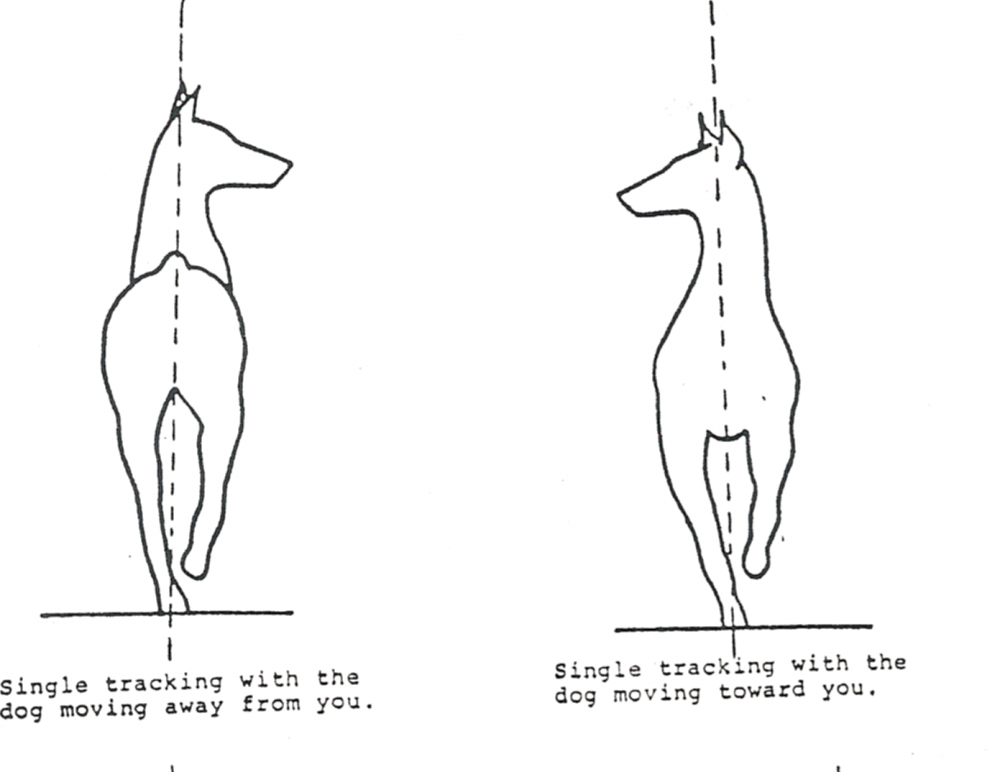
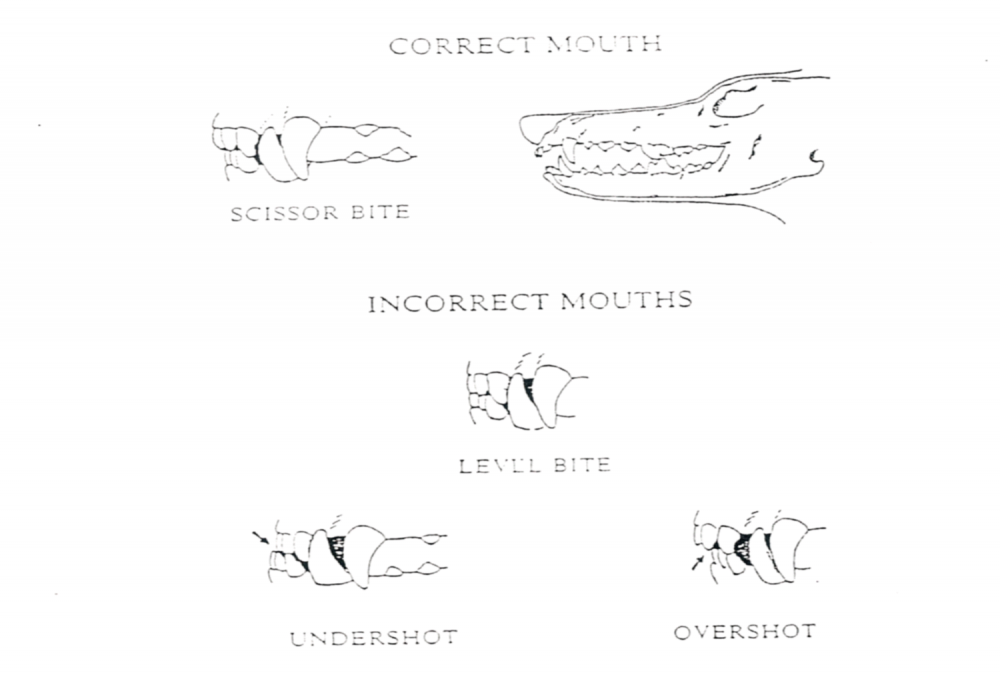
Comments - Angulation
The angulation in the GP has been debated many times. The FCI standard says 95 to 100 degrees.
The USA breed Standard says 90 degrees.
The UK does not have details on the degree.
The angulation in the GP has been debated many times. The FCI standard says 95 to 100 degrees.
The USA breed Standard says 90 degrees.
The UK does not have details on the degree.

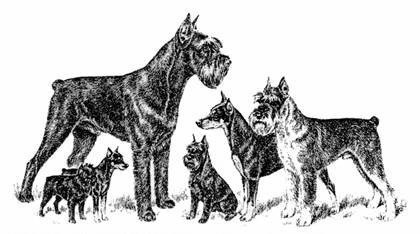
Comments - Neck
The neck of the german Pinscher is called to be elegant but strong. Elegant in this sense is not giraffe like or refined- so fine creating a weak thin neck. These dogs are hunters and must have enough strength to bite and shake a good sized prey or even larger animals it catches.
The neck of the german Pinscher is called to be elegant but strong. Elegant in this sense is not giraffe like or refined- so fine creating a weak thin neck. These dogs are hunters and must have enough strength to bite and shake a good sized prey or even larger animals it catches.

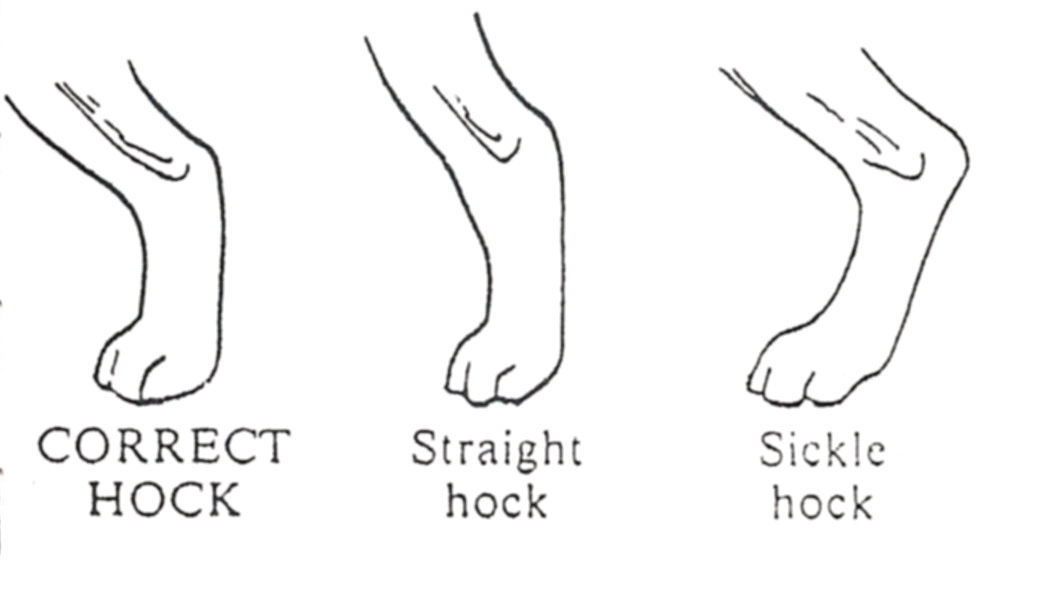

The versions of these tails would break under working conditions.
Comments - Size
The breed under the UK breed standard height 17 up to 19 inches. The other world standards are all at 17 - 20 inches both the Bitches and Dogs. Most breeders allow for this in their breeding program. There are dogs that are over sized by 2-3 inches. Most bitches are from 17 - 18 inches as an average. Most dogs are from 18 to 20 on average.
The breed under the UK breed standard height 17 up to 19 inches. The other world standards are all at 17 - 20 inches both the Bitches and Dogs. Most breeders allow for this in their breeding program. There are dogs that are over sized by 2-3 inches. Most bitches are from 17 - 18 inches as an average. Most dogs are from 18 to 20 on average.

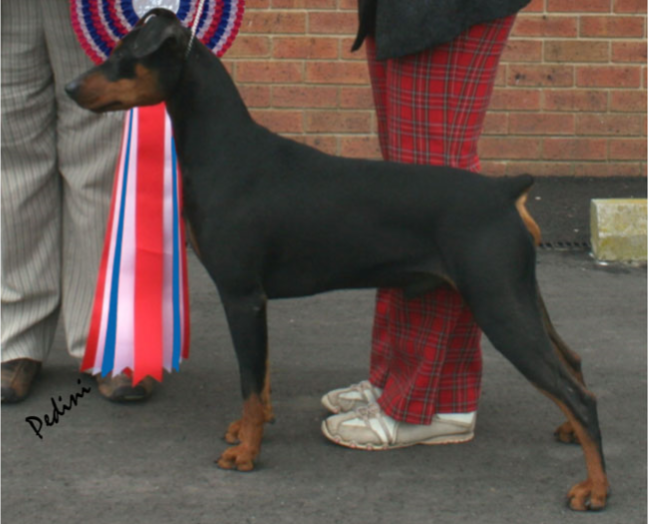

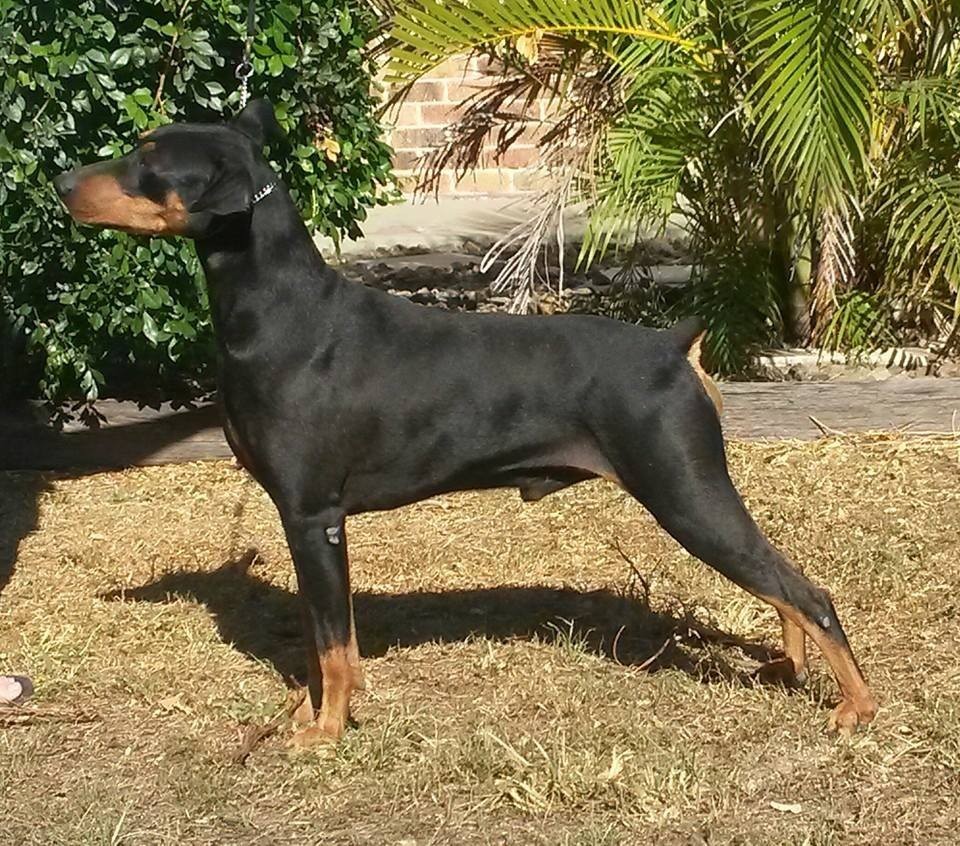
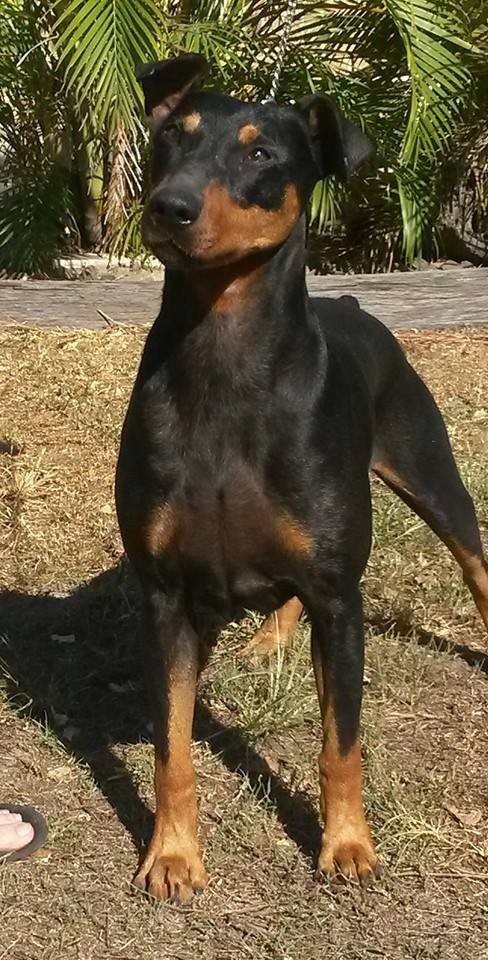

Comments - Size
This dog is 19 3/4 inches high with a good width of body.
This dog is 19 3/4 inches high with a good width of body.

Exaggerated mis markings from correct to total reversal of facial markings
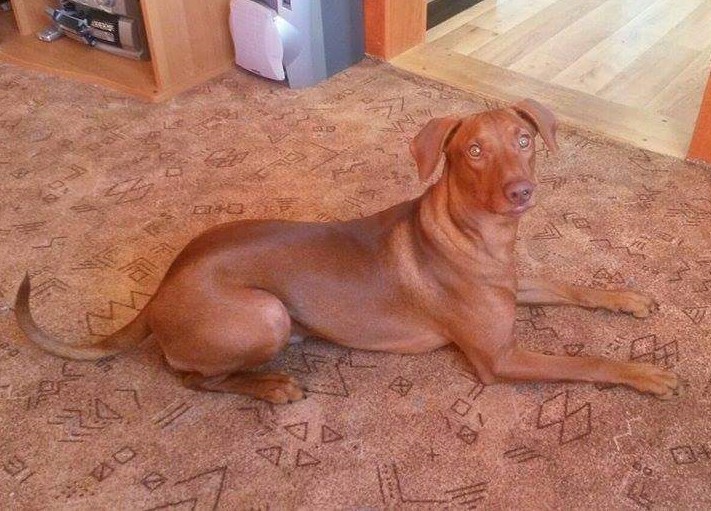
This dog is the red nosed Red colour not accepted in the UK breed standard, although a good example of the breed.
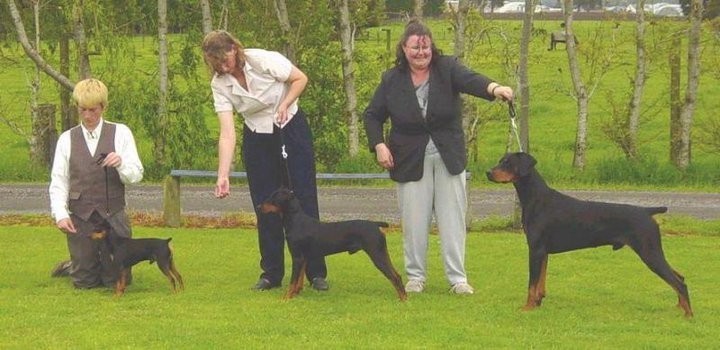
To my knowledge all the photos used that are not my own, I have been given permission to use them in a breed lecture on GP's or on my website.
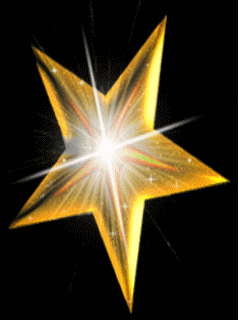
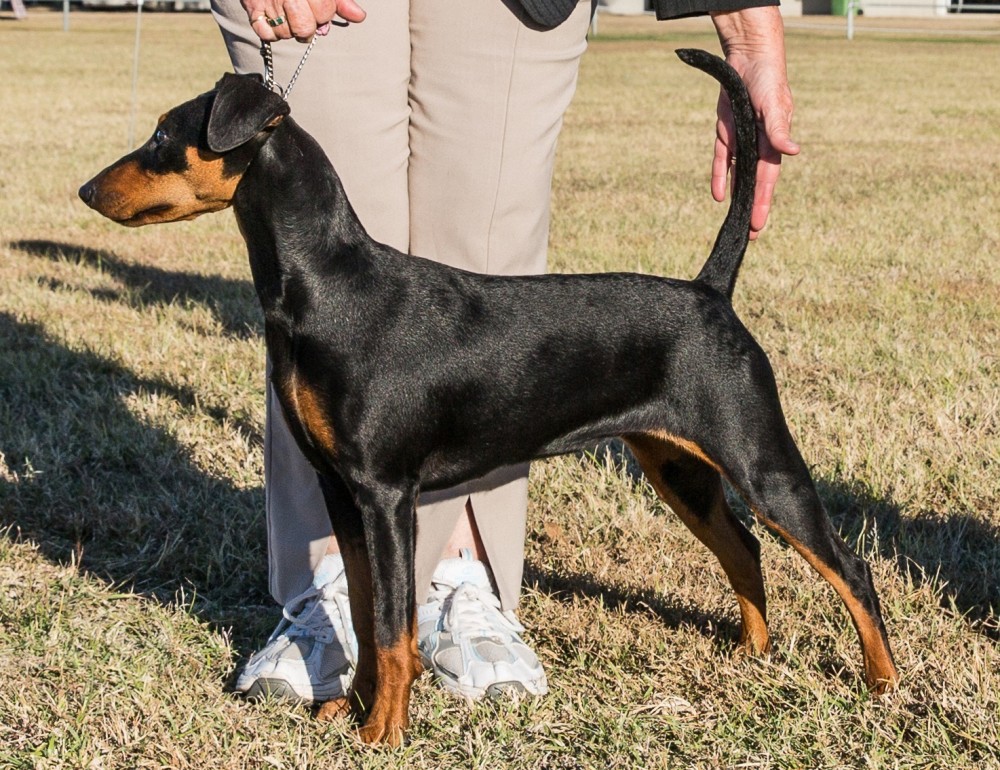
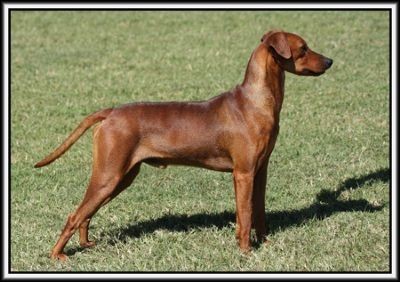

Miniature Pinscher. German Pinscher. Dobermann
